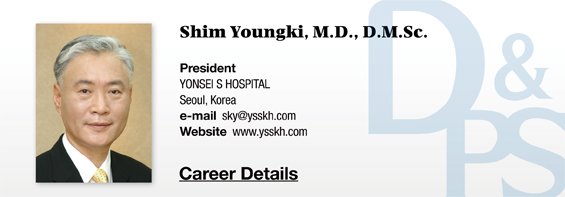▶ Previous Artlcle : #1-1. Definition of Varicose Veins
Depending on the scholar, telangiectasia and reticular veins may or may not be included in the definition of varicose veins. As mentioned above, venous valve dysfunction is the main cause of varicose veins. Varicose veins is not as prevalent among Koreans as it is among Caucasians, although the reason for this disparity is not yet clear. It is speculated that leaner diet and less sedentary life style would be associated with the lower prevalence among Koreans. The Japanese with their traditional Tatami floor are likely to have an incidence of varicose veins comparable to that of Koreans. In my experience in China, it seems that the Chinese are more frequently affected by varicose veins compared to Koreans. Between the Chinese and Koreans, Chinese people eat more oily food, live sedentary lives, earn less income, and have poorer hygiene compared to Koreans, which may all possibly contribute to the higher incidence of varicose veins. Chinese patients often visit hospitals after the condition has seriously progressed such as chronic thrombophlebitis or ulcer.
[Advertisement] A-One LITE(Facial Diagnosys System) – Manufacturer: BOMTECH(www.bomtech.net)
Causes of venous valve dysfunction
- Venous stasis
- Fibrin cuff
- Postphlebitic leg
- Venous hypertension
- Water hammer effect : perforators
- Leukocyte trapping
- Increased enthothelial area
- Distribution of incompetence
- Venous hypertension + leukocyte activation
In 1995, when I first started treating varicose veins at my hospital, accurate diagnosis and specialized treatment was rare even in Korean university hospitals. Doctors avoided recommending the treatment to patients, if the condition was not severe or seriously complicated. Patients were often neglected until the symptoms were exacerbated. At that time, departments of vascular surgery and thoracic surgery focused their attention on more pressing emergent arterial conditions, rather than venous conditions which are less urgent. Varicose veins was considered a nuisance that requires a lengthy operation, is not simple to treat and likely to recur.
Before varicose veins became recognized as a condition requiring treatment by the public, it was mostly treated by conventional surgical techniques (stripping) under general or spinal anesthesia. From a patient’s perspective, it was not easy to leave work for hospitalization, overcome the fear of pain from surgery for a condition that did not directly disrupt daily life. In Europe, on the contrary, sclerotherapy has long been established as the mainstream method of early varicose vein treatment, allowing convenient outpatient treatment without hospitalization.
There is a growing demand for varicose vein therapy in Korea as well. Chronic venous diseases are expected to continuously increase in the future, and most of the patients want aesthetic improvement. They also prefer nonsurgical sclerotherapy, if effective, rather than a painful, risky and scarring surgery. Naturally, sclerotherapy has become one the most important therapies of venous diseases.
According to data in 2006, sclerotherapy is estimated to have been performed by about 2,000 doctors in Germany (population: 83 million) and by about 1,800 doctors in France (population: 60 million). In Korea, the Korean Society for Phlebology (KSP) was founded in 2001 by me and currently about 650 members are actively working to treat venous diseases. However, this is still a small number considering the population of South Korea (48 million). About 1,500 medical professionals are expected to treat chronic venous diseases in the coming years.
What I want to point out here is that doctors in Germany and France are trained in phlebology in specialized courses so that the quality of treatment could be consistent. In Korea’s medical education, it would be difficult to provide an in-depth training solely for phlebology considering the rapid growth and demand of numerous subdivisions. It is difficult to provide an in-depth training in phlebology even in the specialized courses of dermatology, surgery and thoracic surgery. I hope that KSP could open a school specializing in phlebology and provide a training course for interested doctors. Then it would be even possible to establish a phlebology specialist system.
Sclerotherapy, one of the topics to be addressed in this series, is covered by the current national health plan in Korea. Although the options are limited, treatment of sclerotherapy is covered by the health plan in principle. It is my understanding, however, that it may not be covered by insurance if reflux is not observed on the scans and if it is applied purely for aesthetic purpose. Uninsured application would not be much of a problem if the patient is fully informed of precautions, provided with a certain period of time to deliberate on whether or not to receive the therapy, has submitted a written informed consent for the therapy, and the doctor did his best for the therapy.
Sclerotherapy is a simple procedure that doctors can conveniently carry out without a need for an expensive device or facility. With inexpensive cost, no need for hospitalization and no scarring, patients may easily decide to receive treatment. As with any other therapies, however, it is not without unexpected side effects. Doctors should be well aware of the pharmacology of the sclerosing solution, pathophysioloy of venous diseases, as well as diagnoses and treatments before engaging in sclerotherapy. Patients may be highly satisfied with the therapy if they achieve a good result from an accurate and specialized therapy.


-To be continued-
▶Next Artlcle : #2-1. Functions of the Venous System





















